Honor Award
Padaro Lane
Carpinteria, CA USA
Keith LeBlanc Landscape Architecture, Boston USA
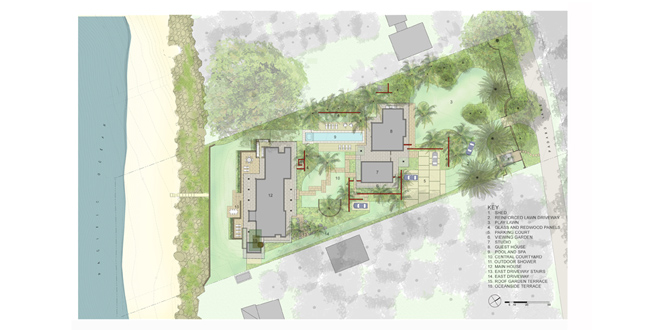 Close Me!
Close Me!Site Plan
Download Hi-Res ImagePhoto 1 of 16
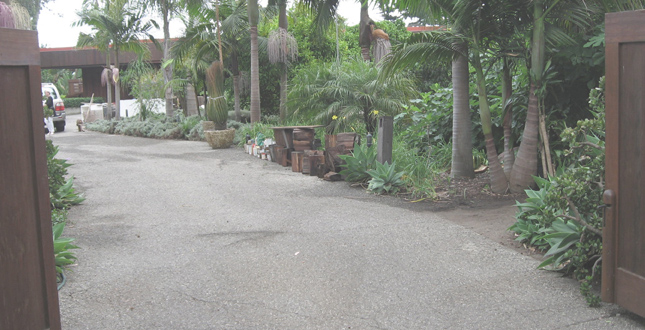 Close Me!
Close Me!An asphalt driveway provided an unappealing entry to the property. The site contained an array of mature tropical plant materials collected by the previous owner. These materials were cataloged, conserved, and reused throughout the site.
Download Hi-Res ImagePhoto: Keith LeBlanc Landscape Architecture, Inc.
Photo 2 of 16
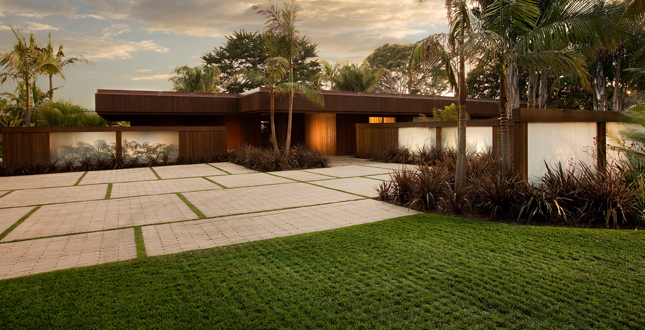 Close Me!
Close Me!Offset panels of permeable paving extend the horizontal language of the roof to the ground plane defining the parking court. A reinforced grass driveway seamlessly blends into the lawn allowing access from the entry gate.
Download Hi-Res ImagePhoto: Jim Bartsch
Photo 3 of 16
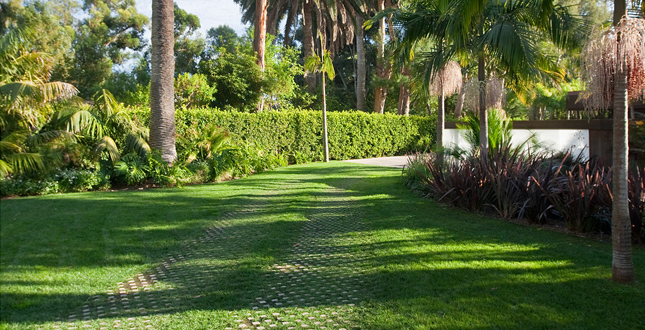 Close Me!
Close Me!The reinforced lawn driveway provides a connection from the street to the parking court.
Download Hi-Res ImagePhoto: Jim Bartsch
Photo 4 of 16
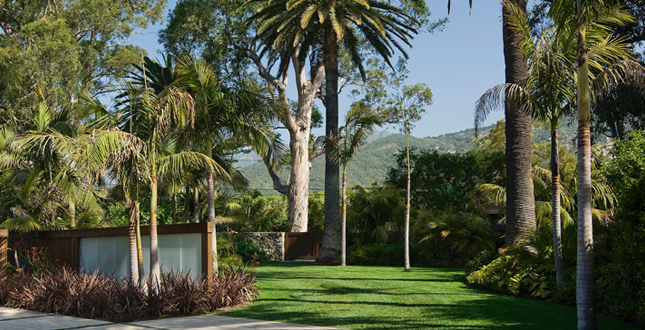 Close Me!
Close Me!Looking back towards the entry gate, the reinforced lawn driveway blends into the larger landscape.
Download Hi-Res ImagePhoto: Jim Bartsch
Photo 5 of 16
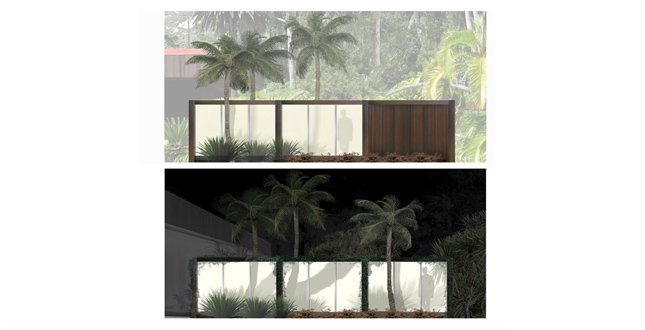 Close Me!
Close Me!These design development studies illustrate how panels of recycled redwood and translucent glass are activated by the patterns of light and shadow cast from the bold tropical plantings.
Download Hi-Res ImagePhoto 6 of 16
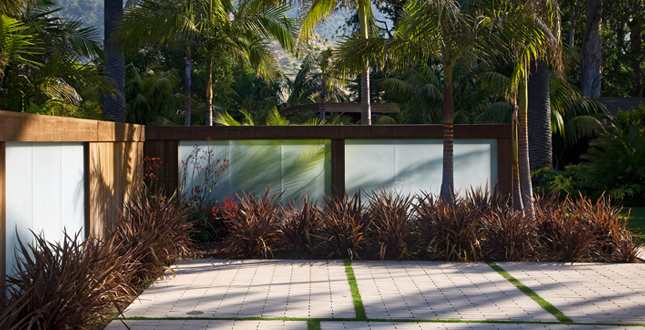 Close Me!
Close Me!The salvaged redwood and glass landscape panels interact with a massing of flax 'Dark Delight' to define one corner of the parking court.
Download Hi-Res ImagePhoto: Jim Bartsch
Photo 7 of 16
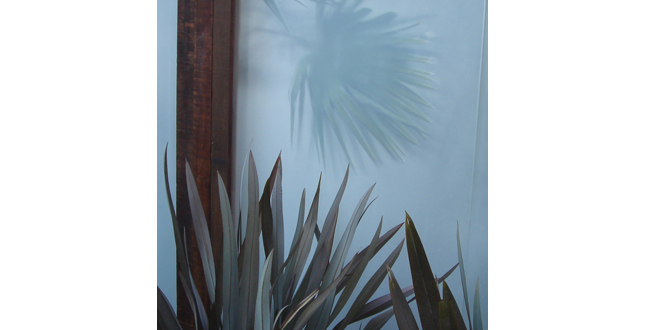 Close Me!
Close Me!The silhouette of a fan palm against the translucent glass panel.
Download Hi-Res ImagePhoto: Keith LeBlanc Landscape Architecture, Inc.
Photo 8 of 16
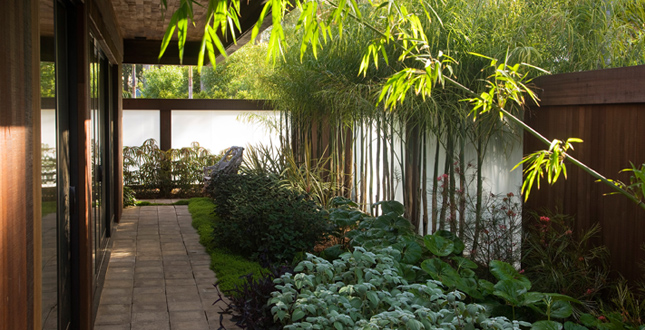 Close Me!
Close Me!Glass doors now open from the studio, transformed from an existing garage, into the viewing garden. This garden provides a contemplative private addition to the studio while blurring the line between interior and exterior space.
Download Hi-Res ImagePhoto: Jim Bartsch
Photo 9 of 16
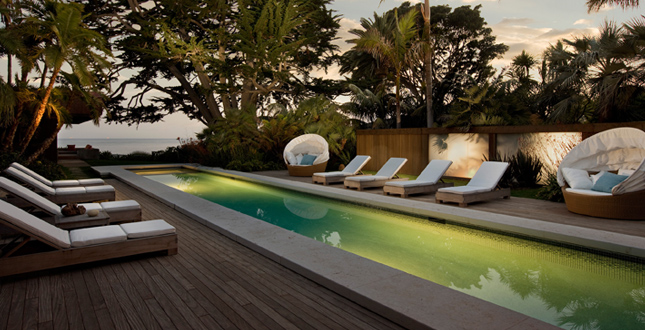 Close Me!
Close Me!The wood deck and monolithic coping introduce the language of architectural materials to the pool area.
Download Hi-Res ImagePhoto: Jim Bartsch
Photo 10 of 16
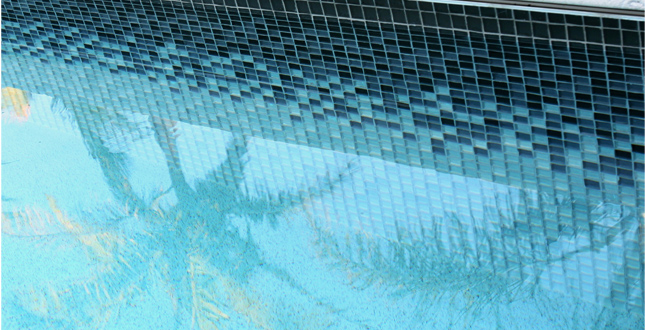 Close Me!
Close Me!Recycled glass tile was designed to fade from dark to light as it descends into the pool.
Download Hi-Res ImagePhoto: Keith LeBlanc Landscape Architecture, Inc.
Photo 11 of 16
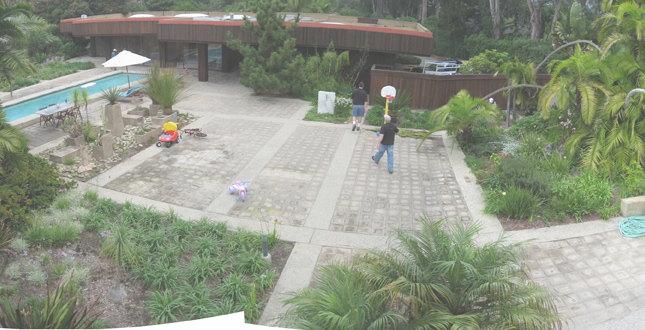 Close Me!
Close Me!The central courtyard was defined by large expanses of paving surrounded by remnants of the tropical planting collection. This space provided an unappealing focus for the interior of the home.
Download Hi-Res ImagePhoto: Keith LeBlanc Landscape Architecture, Inc.
Photo 12 of 16
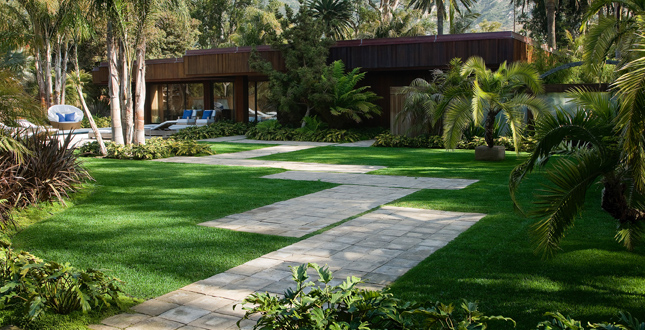 Close Me!
Close Me!Concrete pavers were recycled and reused to create this meandering pathway through a now lush central courtyard.
Download Hi-Res ImagePhoto: Jim Bartsch
Photo 13 of 16
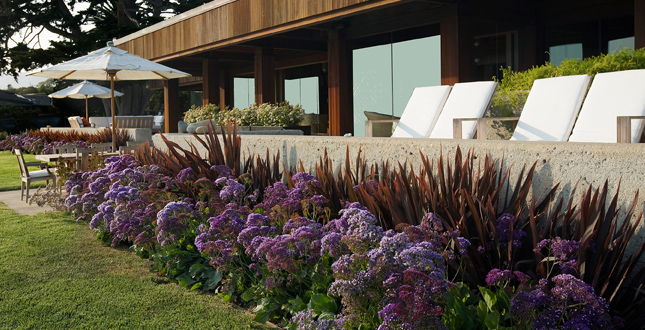 Close Me!
Close Me!A linear massing of sea statice and flax ‘Dark Delight’ achieves the same bold impact as the redwood roofline.
Download Hi-Res ImagePhoto: Jim Bartsch
Photo 14 of 16
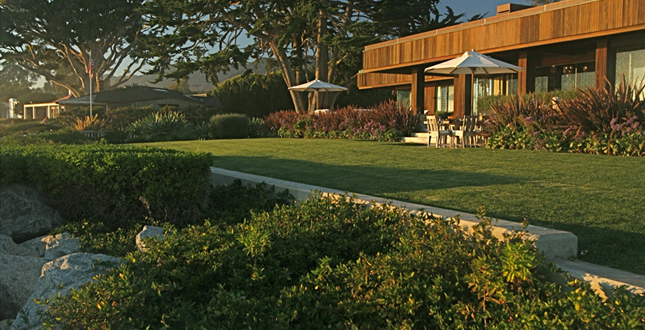 Close Me!
Close Me!Existing vegetation provides a linear buffer between the designed landscape and beachfront.
Download Hi-Res ImagePhoto: Jim Bartsch
Photo 15 of 16
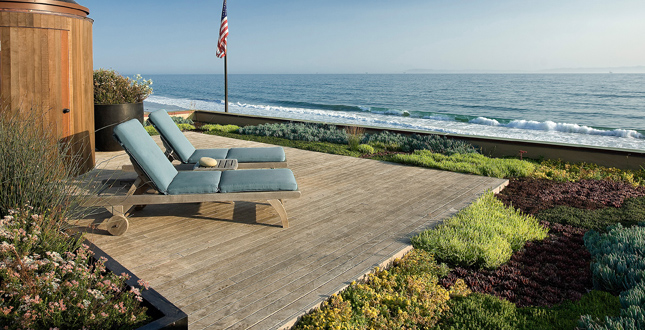 Close Me!
Close Me!A green roof and deck provide a dramatic vantage point to view the Pacific Ocean beyond.
Download Hi-Res ImagePhoto: Jim Bartsch
Photo 16 of 16
Project Statement
The modern aesthetic of this striking home was embraced by the landscape architect during the renovation of this coastal garden. The design of this renovated landscape unifies the site by embracing the distinctive architecture and existing plant palette while incorporating contemporary standards of environmental stewardship. The resultant garden is a contemporary landscape informed by the site's modernist past.
Project Narrative
—2010 Professional Awards Jury
Existing Conditions
This 1.7-acre property is set within a series of narrow residential sites that line the Pacific coast. The existing landscape exhibited little relation to the modernist architecture and little cohesion in its own right. The planting design was dominated by a collection of haphazardly placed tropical plants accumulated by the previous owner over several decades. The collection had been poorly maintained and had become overgrown through the years. Like the planting, large expanses of degraded hardscape materials in the courtyard and driveway contributed to an air of neglect throughout the property.
Design
The landscape architect harnessed the strong planar forms of the architecture to create equally bold exterior spaces. At the parking court, offset panels of permeable paving extend the language of the rooftop planes to the ground. In the central courtyard, similar panels of recycled concrete pavers are set at right angles creating a staggered garden path that leads visitors toward the main house.
Redwood, stone, and glass, a palette established by the architecture, was introduced into the landscape in a variety of unexpected ways. At the pool, these materials were layered to create a striking counterpoint to the house. A wooden deck creates a horizontal platform which is punctured by a pool framed with a monolithic stone coping. Fading from dark to light, recycled glass tiles reverse the expected gradient as they descend into the pool heightening the shadow line created by the overhanging stone coping.
The materials of the architecture were further incorporated into the garden through the careful insertion of salvaged redwood and translucent glass panels throughout the site. These panels bridge landscape and architecture by defining outdoor spaces, providing privacy, channeling views and creating simple planes that become dynamically activated through their interaction with the patterns of light and shadow cast from adjacent plant material.
The modernist aesthetic also informs the specifics of the planting design. Palms, flax, and papyrus planted beside the redwood and glass panels were selected for their ability to create crisp, bold shadow patterns. Both along the redwood panels and the ocean terrace, massings of a single color create textural volumes that allow the landscape to achieve the same bold impact as the architecture. These massings contrast with the patchwork of varied sedums which frame the private roof deck above the master suite.
Environmental Stewardship
Embracing preservation was the first step in developing an environmentally sensible site design. By working with the existing home and plant stock the landscape architect was able to reduce the overall levels of waste material by incorporating salvaged materials throughout the landscape design.
The original concrete pavers were one of several materials that were salvaged and reused throughout the site. Relaid, these pavers form the staggered garden path which crosses the central courtyard. Similarly, the redwood and glass panels were constructed from salvaged planking saved during the concurrent architectural renovation. In addition, existing trees and shrubs were tagged, cataloged, and reused in order to significantly reduce the amount of new plant material introduced into the new planting design.
Reducing the levels of impermeable surfacing was also a major goal of the landscape plan. This task was accomplished in a number of ways. An existing asphalt driveway and parking court were removed in favor of a reinforced grass drive and a parking court set with permeable paving. Reinforced grass was again used at the south access drive, allowing infiltration to occur where previously a compacted dirt driveway had channeled runoff directly toward the ocean. On-site infiltration was also increased by the removal of concrete paving around the pool and reduction of the amount of concrete pavers in the central courtyard. Finally, the green roof also contributes to a reduction in runoff in this area.
Project Resources
Landscape Architect
Keith LeBlanc Landscape Architecture, Inc.
Keith LeBlanc, ASLA
General Contractor
Heimberg Construction, Santa Barbara, CA USA
Landscape Contractor
Cal-Western Landscape, Santa Barbara, CA USA






